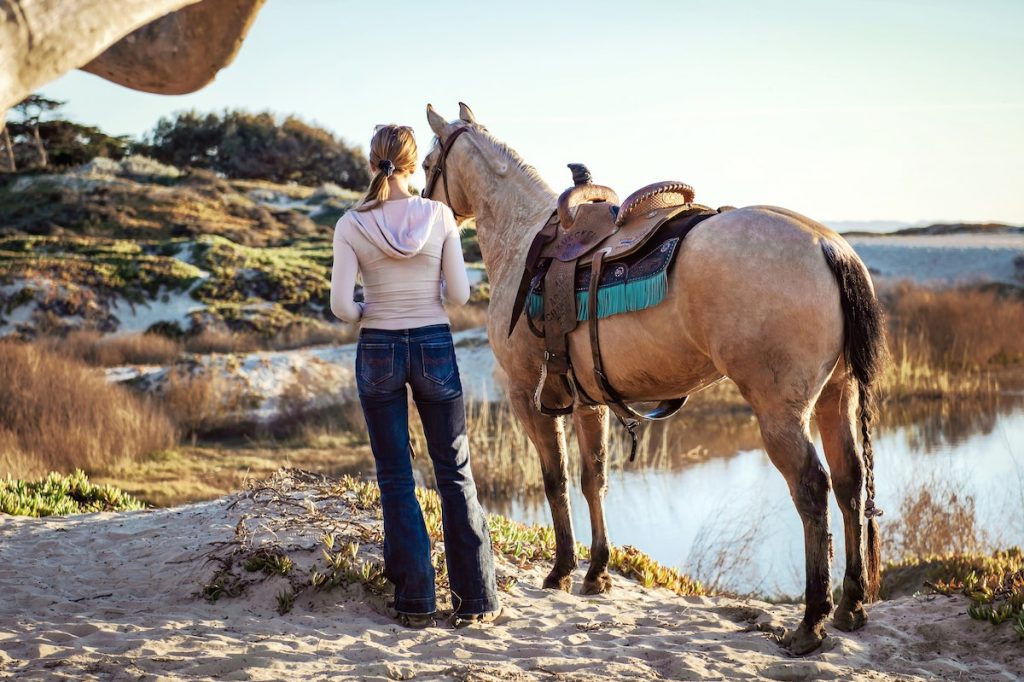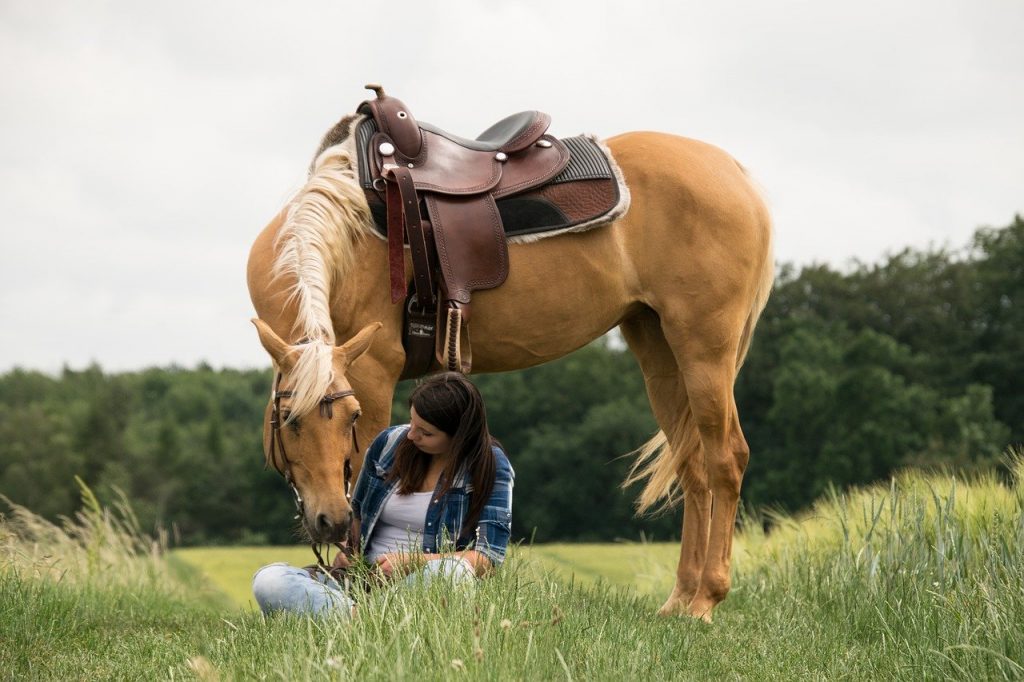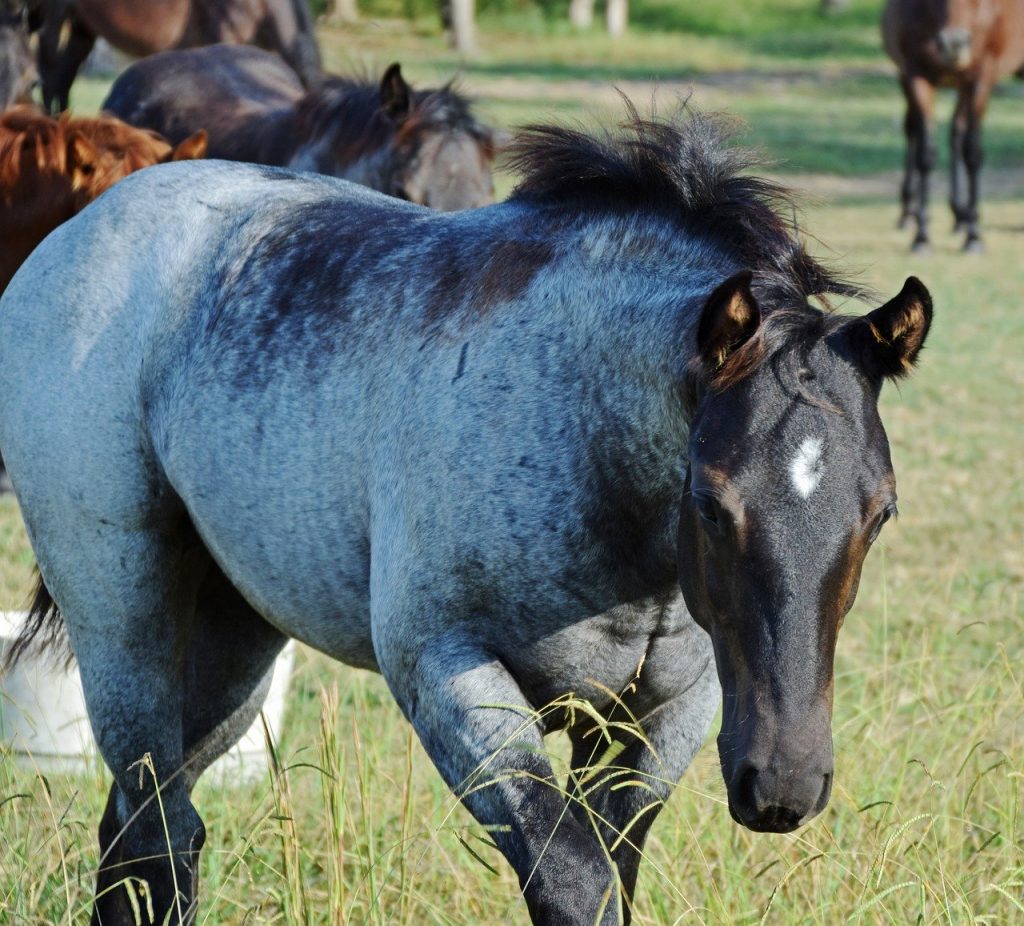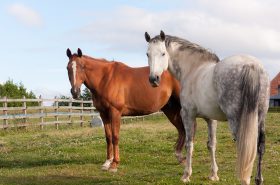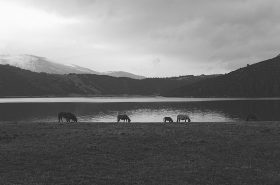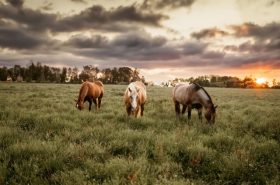These horse colors will take your breath away.
Horses come in a variety of coat colors. Some of the more popular ones include bay, chestnut, black and grey. There are also a handful of more unique colors, such as buckskin, palomino and pinto. Each coat color is created by a horse’s genetic profile. In many cases, the breeder can predict the color before the foal is even born. It’s very fascinating!
Whether you want a gleaming chestnut or loud pinto, it’s pretty neat to learn about coat colors. You may discover some variations that you didn’t know even existed.
Buckskin
A buckskin horse has a lovely golden coat with black accents. Their mane, tail and legs are usually black, while their body can come in various shades of tan or gold. This color may or may not have white markings on their legs or face. Breeders striving for a buckskin will need to combine a cream dilution gene with a bay gene. This is known as a diluted bay.
This color comes in many different breeds- Quarter Horse, Mustang, Lusitano, Tennessee Walking Horse, Morgan and a handful of others. Buckskin horses are in high demand! This beautiful color is sure to grab the attention of judges and fellow equestrians. Don’t be surprised if you end up paying a little more for a horse of this color.
Palomino
Another golden beauty, palomino horses are simply stunning to look at! Their coat color can range from a pale yellow to a vibrant gold shade. This type of horse will have a white mane, tail and possibly markings on the legs and face. If hoping to produce this color, then you’ll need to combine a chestnut base with a cream gene.
The palomino color can appear on lots of different breeds. Some include Quarter Horses, Miniatures, American Saddlebreds and many others. This color has made quite the impression in the horse world. A few horse celebrities like Trigger and Mister Ed were palomino.
Cremello
The cremello color is exquisite! Some may describe it as the color of unicorns. A cremello will have a cream coat, white mane and tail, pink skin and beautiful blue eyes. There is room for variation in the color with some being more reddish than others. To achieve this color, there must be two cream dilution genes on a chestnut horse. This is known as double diluted.
You may discover this coat color on Quarter Horses, Shetland Ponies, Draft Horses and quite a few other breeds. In general, they are rare. Some breeders choose to focus their program on this lovely color. Those that own a cremello will have to be extra careful with their sensitive pink skin and blue eyes. The sun can easily burn them!
Roan
Roan is a fun color pattern! It’s available in a few variations. A bay, chestnut and black horse may be born with this coloring. Roan can be described as white hairs on top of a base color. Depending on the base, you may have a strawberry, red or blue roan horse. Most of the time the head, legs and tail only have a few white hairs and sometimes none at all. This pattern is present at birth, though it may be hard to see at first. It comes from a dominate gene.
Some popular breeds that can have this coat pattern include Quarter Horses, Mustangs, Paso Finos and a few Europeans draft horses. An interesting fact about these beauties- once the roan hair is scraped off only the base coat color will grow back.
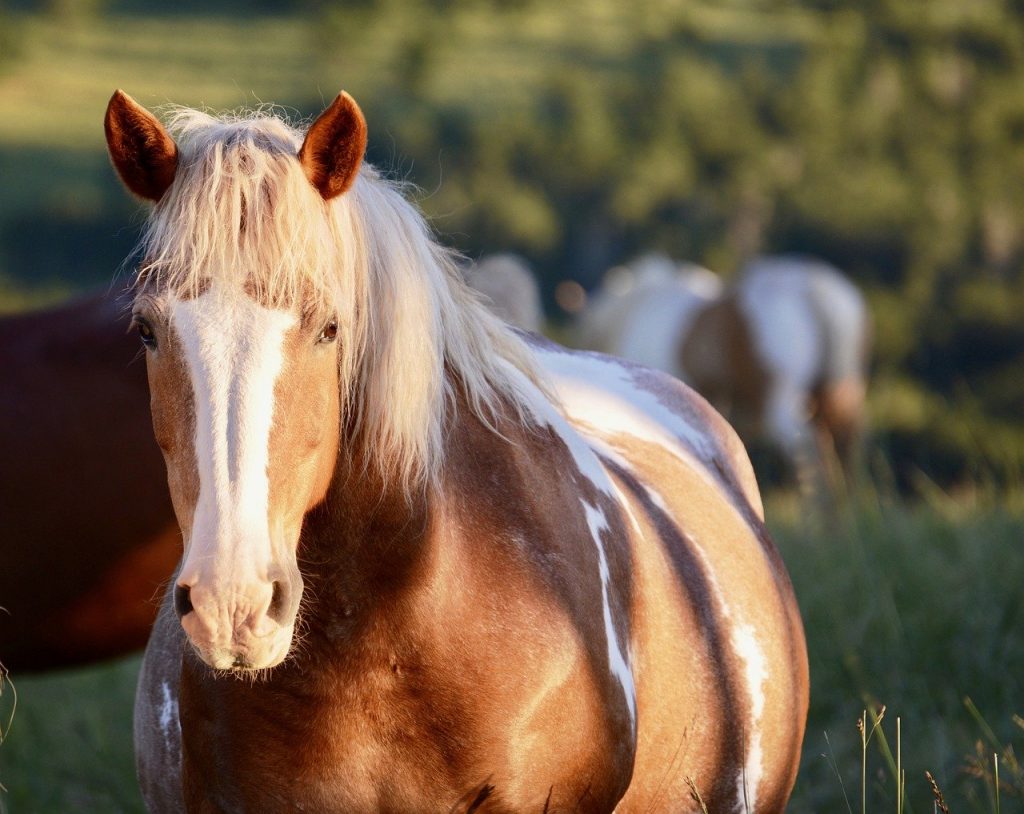
Pinto
A pinto horse can easily turn heads. They have large patches of white and another color like brown or black. There are quite a few variations- tobiano, overo, medicine hat, piebald and skewbald. Basically, these describe the type of coat pattern and how the spots appear.
Paints and pintos are separated through breeding. A Paint is able to trace their bloodlines from Quarter Horses or Thoroughbreds. However, many breeds can have a pinto coat. Some include Miniature Horses, Arabians, Morgans and various gaited breeds.
Beauty is subjective; however, these unique coat colors seem to draw the attention of people worldwide. Do you think they’re the most beautiful colors?
**
Emily Fought discovered her passion for horses early on in life. When she isn’t writing about them, you can find her in the barn riding. Although Emily’s background is in dressage, she enjoys cross-training and is an avid trail rider. She resides in Northwestern Pennsylvania with her husband and small dog. Together, they own and operate Humblewood Farm.

